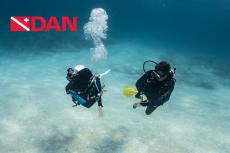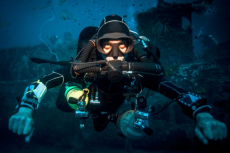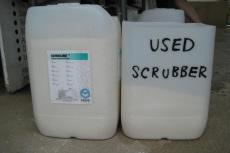Stings & Scrapes - Part 1
The ocean’s flora and fauna are why many of us dive, but they’re also responsible for thousands of injuries every year. The good news is that while common, these injuries are rarely serious and can usually be avoided with a little planning and forethought.
While the most exotic of these potentially dangerous organisms are fairly well known, the more mundane sometimes cause uncertainty. Know what’s most likely to cause an injury on your next dive so you can relax and enjoy making bubbles.
In part one of this two-part series we’ll refresh your knowledge of wound care and treating common marine stings; next month we’ll cover injuries that involve scrapes, bites and penetrating wounds.
Wound Care
Caring for wounds of all types requires the same foundational knowledge. Once the source of the injury has been removed and the injured diver has been evaluated for life-threatening conditions, it’s time to start thinking about infection control and general wound care.
Any break in the skin can cause an infection, and exposure to a marine or freshwater environment can significantly increase the risk of infection. Some diving locations are also home to some uncommon pathogens, and even minor wounds in these areas can become infected quickly and should be taken seriously.
Proper wound cleaning immediately after injury is crucial to preventing a serious infection, but performing that cleaning with dirty hands or instruments will likely do more harm than good. To avoid contaminating a wound site, wash your hands immediately before providing any care, and wear gloves and other personal protective equipment if available.
The specifics of how to clean a wound will vary based on its location and type, but in general a thorough rinse, a gentle cleaning with a mild soap and a second rinse will help remove debris and bacteria and promote healing. Larger wounds may require more cleaning and involve more pain during cleaning.
Sometimes allowing the injured person to clean their own wound can make it more tolerable. Other wounds may require cleaning by a medical professional. After providing basic wound care keep an eye on the person to watch for signs of shock, allergic reaction or anaphylaxis.
Stings
Apart from a few exotic species and reactions, marine stings are mostly easy to treat, easier to avoid and rarely fatal. Despite this they are common and can be extremely painful. With all types of marine stings it’s important to monitor a diver for a delayed allergic reaction or hypersensitivity.
Reactions to stings and envenomations are not always immediate — symptoms may appear over the course of minutes or hours after the injury. Should an injury cause an allergic reaction (i.e., symptoms such as shortness of breath, chest pain or difficulty breathing), it’s important to seek medical help immediately.
If available, Benadryl can be used to slow the onset of symptoms, and an Epi-Pen can be used if the diver has a known allergy and a prescription for the medication.
For stings from fire coral and hydroids, the focus of wound care is to first neutralize the nematocysts, or stinging cells, that caused the initial injury. These can be removed by flushing the injury site with sea water or vinegar.
Flushing with fresh water can exacerbate an injury by causing unfired nematocysts to activate, leading to further envenomation. Large pieces of hydroid or fire coral should then be removed while taking care not to let them contact the skin of either the injured diver or the person providing care.
These and most stinging injuries, are easier to avoid than to treat. Once nematocysts have been removed from the skin there is little that can be done to reverse the damage or discomfort caused by their venom.
Focusing on buoyancy control and identification is the best way to avoid contact with these organisms. In areas where jellyfish are common and contact cannot always be avoided a thin lycra dive skin may be enough to protect the skin from envenomation, although care should be taken not to let loose jellyfish or tendrils float up toward the face or hands.
For more information on treating stings and general wound care, visit: DAN.org




































































































